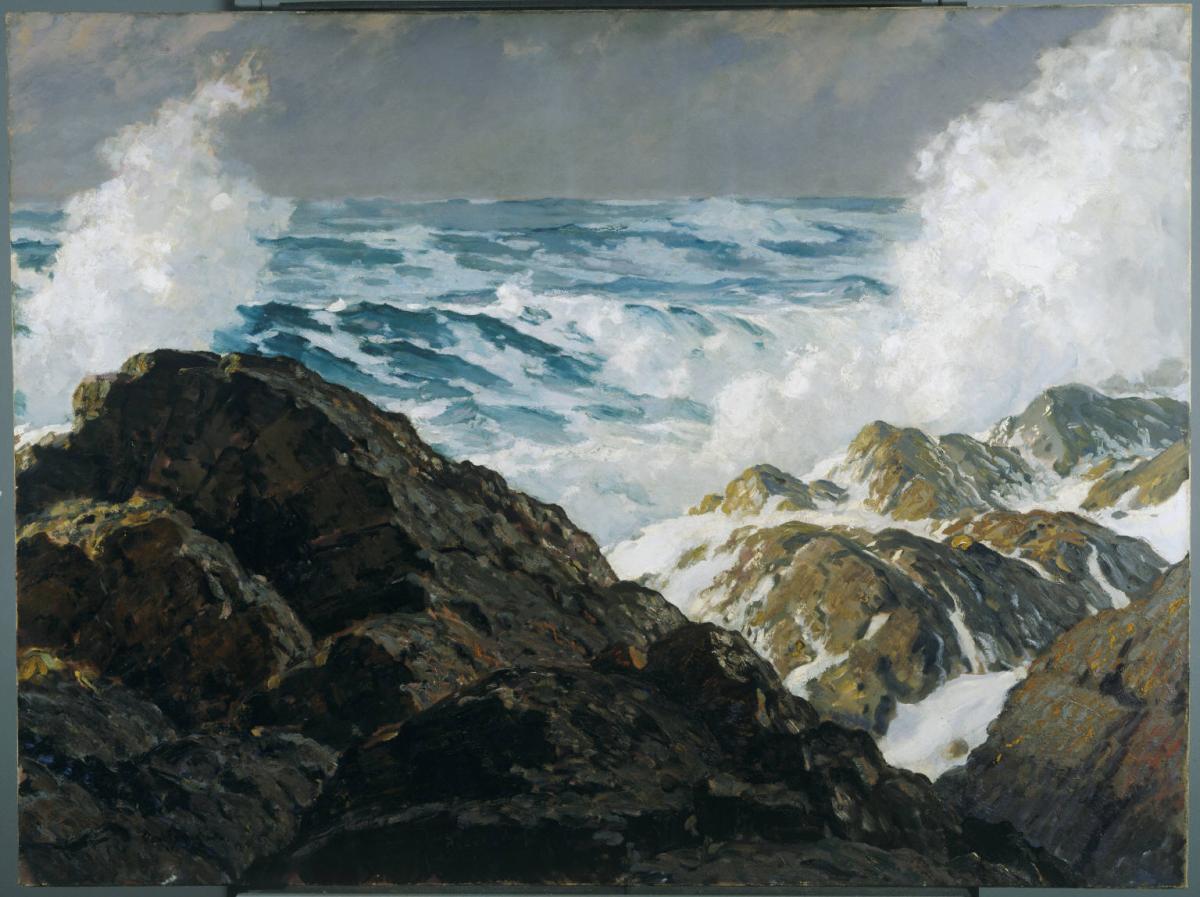Storm Voices
Paul Dougherty ( 1912 )

Early in his career, Paul Dougherty was acclaimed as “the foremost marine painter of the younger generation” for his powerful and turbulent seascapes. Dougherty painted Storm Voices in 1912, during the early part of his career. His works during this period are characterized by short choppy strokes, a muted palette of earth tones, and an emphasis on form. Storm Voices exemplifies this period with its waves crashing against rocks and sun-dappled spray spewing into the atmosphere. The massive rock formations in the foreground create a calm but foreboding presence in contrast to the surf’s frenzied activity. Perhaps influenced by the popularity of films around 1900 showing perpetually crashing waves, Dougherty’s seascapes, like Storm Voices, are cinematic in spirit with the foam and roar of the water unleashed before the viewer.
After purchasing Storm Voices in 1912 on behalf of his father, Duncan Phillips wrote that he liked “that accent of sunlight on the spray which is so invigorating as Dougherty portrays it.” In 1915, after seeing a work by Dougherty in Pittsburgh, Phillips praised the painting’s “great unity of mood” and its “line-color-rhythm-movement-greatness of cloud forms, wave forms, rock forms, [in which] everything is on an epic scale and at a mood of lyric ecstasy.” Phillips attributed Dougherty’s “inspired zeal for rhythm of line and patterns of color” to the influence of Arthur B. Davies.